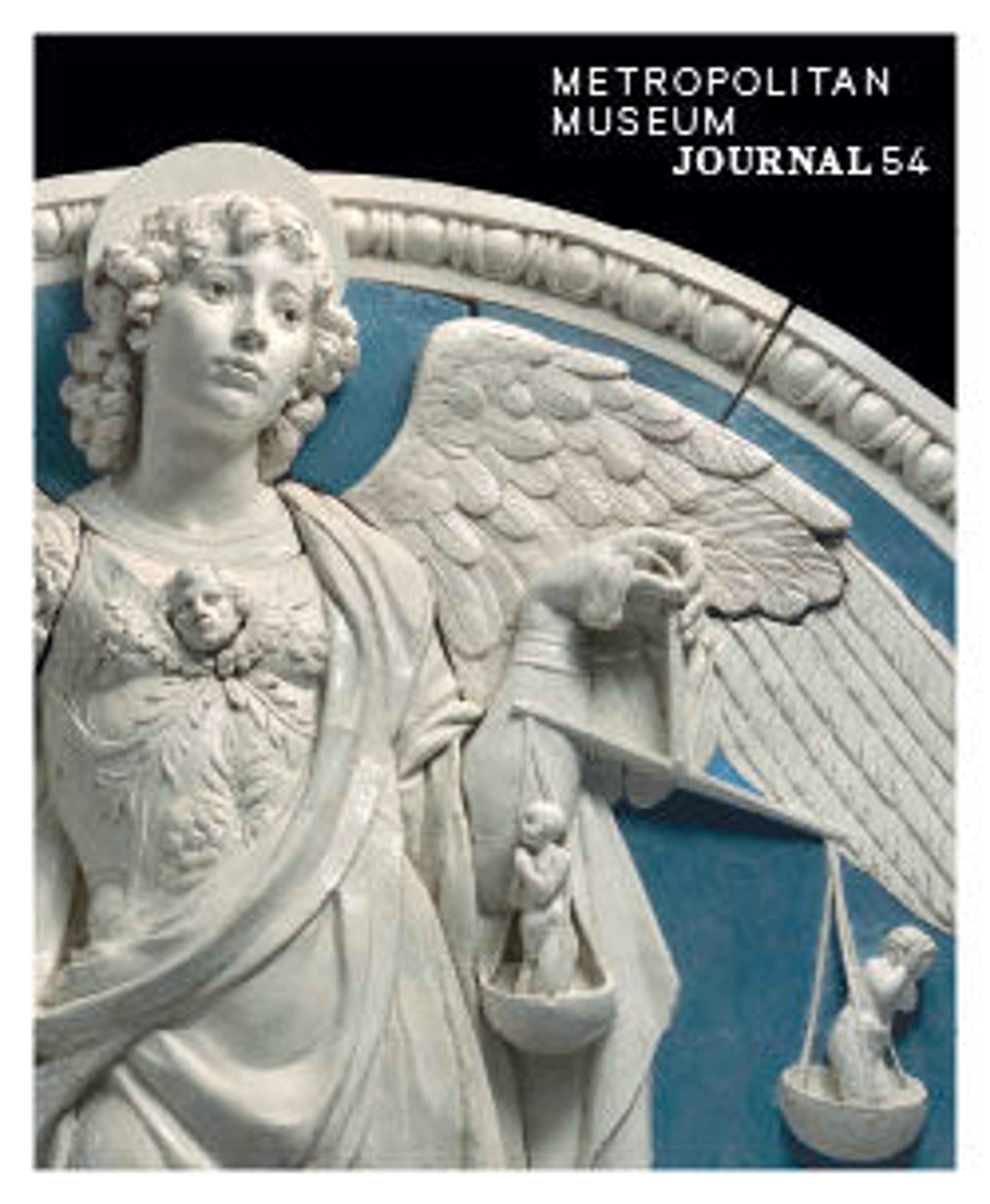Tile Panel
Isfahan, the Safavid capital, and Na'in were the two main centers in which buildings were lavishly decorated with tilework. The old tile-making tradition of composing repetitive geometrical or vegetal patterns was kept alive on mosques and madrasas, but an important innovation on secular buildings was a composition of square tiles individually painted as single elements of an outdoor scene with characters set in a garden landscape. These were placed in royal garden pavilions from the time of Shah 'Abbas to that of Shah Sulayman (the last example being the Hasht Bihisht of 1669). The Museum owns three of these panels, all purchased in 1903 and reported to come from "a palace and pavilion built by Shah 'Abbas on the garden avenue of the Chahar Bagh at Isfahan." The panel here shows a woman and three men in the garden. Such scenes were among the most frequent and fashionable subjects chosen by miniature painters of the Safavid period.
Artwork Details
- Title:Tile Panel
- Date:first quarter 17th century
- Geography:Attributed to Iran, probably Isfahan
- Medium:Stonepaste; polychrome glazed within black wax resist outlines (cuerda seca technique)
- Dimensions:Panel: H. 45 1/2 in. (115.6 cm)
W. 54 5/8 in. (138.7 cm)
D. 2 9/16 in. (6.5 cm)
Wt. 356 lbs. (161.5 kg)
Each tile: H. 8 7/8 in. (22.5 cm)
W. 8 7/8 in. (22.5 cm)
Top Mounts: H. 2 3/8 in. (6 cm)
W. 2 in. (5.1 cm)
D. 1/2 in. (1.3 cm)
Bottom mounts: H. 1 in. (2.5 cm)
W. 1 in. (2.5 cm)
D. 1/2 in. (1.3 cm) - Classification:Ceramics-Tiles
- Credit Line:Rogers Fund, 1903
- Object Number:03.9a
- Curatorial Department: Islamic Art
More Artwork
Research Resources
The Met provides unparalleled resources for research and welcomes an international community of students and scholars. The Met's Open Access API is where creators and researchers can connect to the The Met collection. Open Access data and public domain images are available for unrestricted commercial and noncommercial use without permission or fee.
To request images under copyright and other restrictions, please use this Image Request form.
Feedback
We continue to research and examine historical and cultural context for objects in The Met collection. If you have comments or questions about this object record, please contact us using the form below. The Museum looks forward to receiving your comments.
